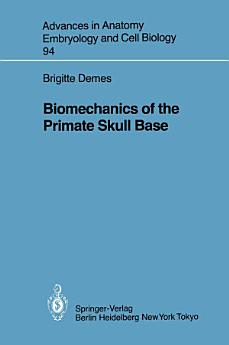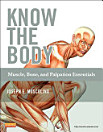Biomechanics of the Primate Skull Base
Brigitte Demes
ଡିସେମ୍ବର 2012 · Advances in Anatomy, Embryology and Cell Biology 94 ବହି · Springer Science & Business Media
ଇବୁକ୍
59
ପୃଷ୍ଠାଗୁଡ଼ିକ
reportରେଟିଂ ଓ ସମୀକ୍ଷାଗୁଡ଼ିକୁ ଯାଞ୍ଚ କରାଯାଇନାହିଁ ଅଧିକ ଜାଣନ୍ତୁ
ଏହି ଇବୁକ୍ ବିଷୟରେ
In the search for explanations for differences in the shape of skulls and their phylogenetic development, the morphology of the skull must be seen in connec tion with the functions it has to perform. The skull encloses the brain and the sense organs and provides them with physical protection. It also houses the initial parts of the respiratory and digestive systems and together with the jaws constitutes a tool capable of cutting and grinding food. The skull must be able to withstand forces imposed upon it by chewing, by movement of the head, by the weight of the head itself, and by impact loadings. An investigation of the factors influencing the shape of the skull has to take into account not only the above-mentioned functions. The shape also de pends on the phylogenetic history 9f the species concerned, which prescribes a basic bauplan and places restrictions on the extent to which functions can influence the design of structural units. The possibilities for variations in skull shape are also limited by ontogenetic development, since the shape of the adult skull is the result of intermediate stages of development, at each of which the skull was a functioning unit. Body size and absolute and relative size of the sense organs in the head also play an important role in determining the shape of the skull.
ଏହି ଇବୁକ୍କୁ ମୂଲ୍ୟାଙ୍କନ କରନ୍ତୁ
ଆପଣ କଣ ଭାବୁଛନ୍ତି ତାହା ଆମକୁ ଜଣାନ୍ତୁ।
ପଢ଼ିବା ପାଇଁ ତଥ୍ୟ
ସ୍ମାର୍ଟଫୋନ ଓ ଟାବଲେଟ
Google Play Books ଆପ୍କୁ, Android ଓ iPad/iPhone ପାଇଁ ଇନଷ୍ଟଲ୍ କରନ୍ତୁ। ଏହା ସ୍ଵଚାଳିତ ଭାବେ ଆପଣଙ୍କ ଆକାଉଣ୍ଟରେ ସିଙ୍କ ହୋଇଯିବ ଏବଂ ଆପଣ ଯେଉଁଠି ଥାଆନ୍ତୁ ନା କାହିଁକି ଆନଲାଇନ୍ କିମ୍ବା ଅଫଲାଇନ୍ରେ ପଢ଼ିବା ପାଇଁ ଅନୁମତି ଦେବ।
ଲାପଟପ ଓ କମ୍ପ୍ୟୁଟର
ନିଜର କମ୍ପ୍ୟୁଟର୍ରେ ଥିବା ୱେବ୍ ବ୍ରାଉଜର୍କୁ ବ୍ୟବହାର କରି Google Playରୁ କିଣିଥିବା ଅଡିଓବୁକ୍କୁ ଆପଣ ଶୁଣିପାରିବେ।
ଇ-ରିଡର୍ ଓ ଅନ୍ୟ ଡିଭାଇସ୍ଗୁଡ଼ିକ
Kobo eReaders ପରି e-ink ଡିଭାଇସଗୁଡ଼ିକରେ ପଢ଼ିବା ପାଇଁ, ଆପଣଙ୍କୁ ଏକ ଫାଇଲ ଡାଉନଲୋଡ କରି ଏହାକୁ ଆପଣଙ୍କ ଡିଭାଇସକୁ ଟ୍ରାନ୍ସଫର କରିବାକୁ ହେବ। ସମର୍ଥିତ eReadersକୁ ଫାଇଲଗୁଡ଼ିକ ଟ୍ରାନ୍ସଫର କରିବା ପାଇଁ ସହାୟତା କେନ୍ଦ୍ରରେ ଥିବା ସବିଶେଷ ନିର୍ଦ୍ଦେଶାବଳୀକୁ ଅନୁସରଣ କରନ୍ତୁ।







